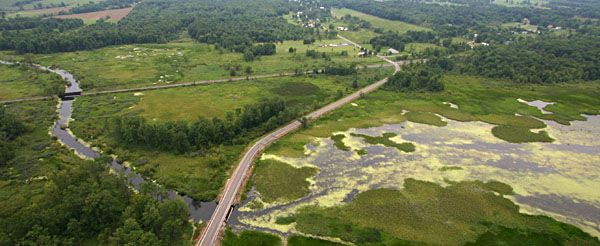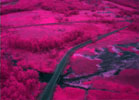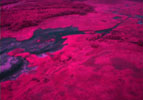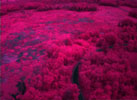After scouting around the area for a couple of hours, we decided to conduct blimp aerial photography near the center of Conneaut Marsh. High thin clouds created hazy, diffuse lighting on the ground, nearly optimum conditions for acquiring aerial photographs over wetland sites. We utilized three cameras--Canon S70 (wide-angle lens), Canon Rebel (superwide-angle lens), and Tetracam (color-infrared).
Wide-angle views over Conneaut Marsh
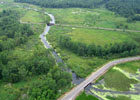
| Looking downstream toward the southeast along the marsh drainage channel. In the lower foreground the road follows a dike. The bridge on the road marks the spillway through the dike. In the distance the Bessemer and Lake Erie railroad runs across the scene. |

| View southward with the village of Geneva in the center distance. The road follows a dike that holds water in the pool to right side. Marsh vegetation: A - spatterdock, B - pickerelweed and cattail, and C - duckweed. |
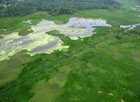
| Looking toward the southwest over a large open pool surrounded by emergent wetland vegetation that forms a green carpet. The linear path across the scene is a channel cut through the vegetation. This linear channel extends through the entire length of the marsh--see above. |

| Closeup view of green carpet of emergent marsh vegetation shown in picture above. Coarse, light-green is spatterdock. Darker green areas are pickerelweed and cattail. |

| View to northeast showing many pools of irregular size and shape with numerous small clumps of emergent vegetation. Geneva Road on right side. |

| Near-vertical shot of the blimp launching site (blue tarp) at a small parking area surrounded by tall trees. This site, where Watson Run Road (below) and Geneva Road (above) fork, is virtually an island within the marsh complex. |
